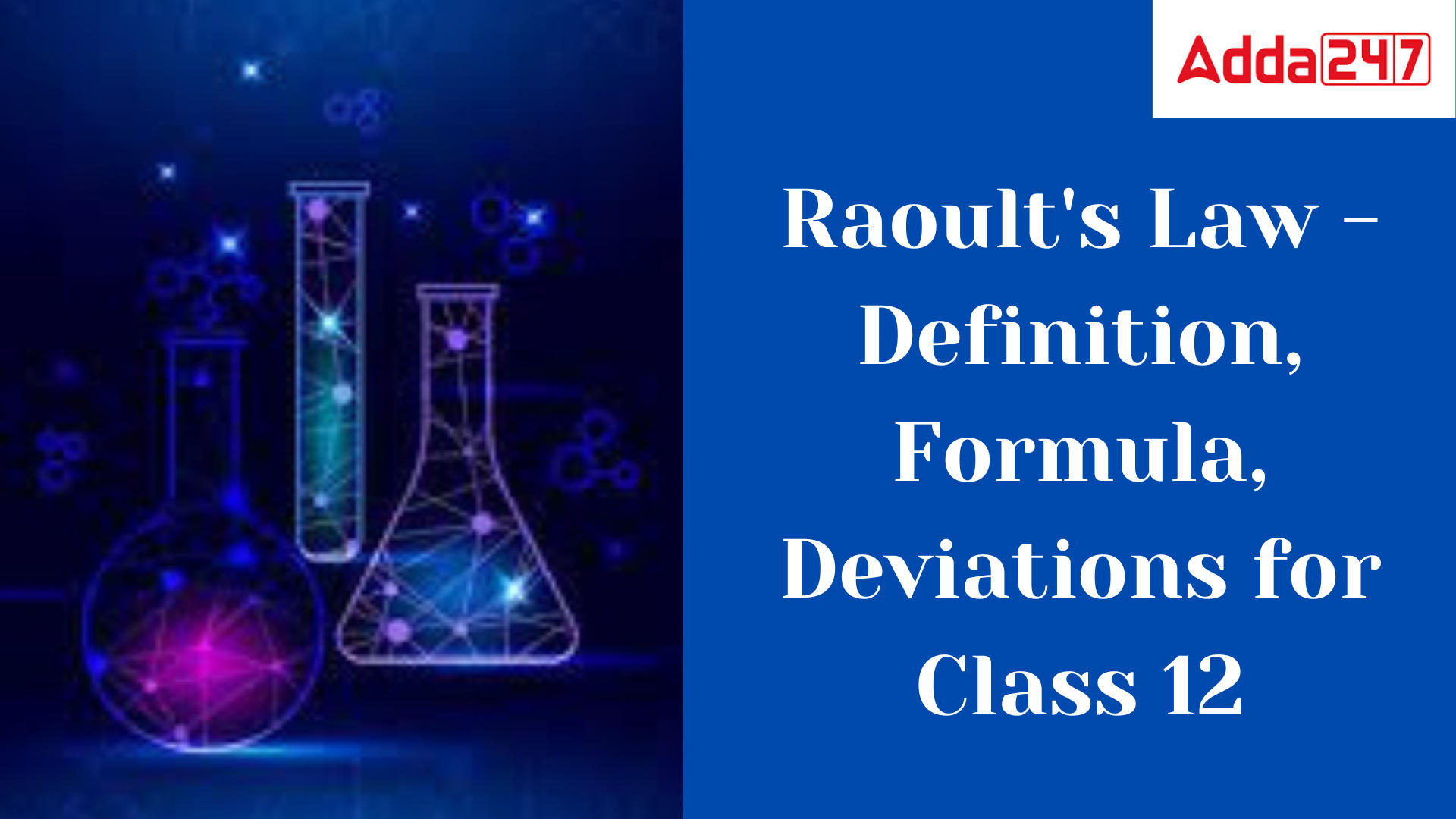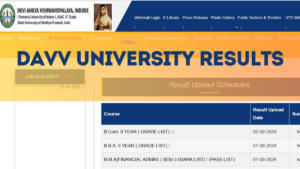Raoult’s Law
Raoul’s Law : A rule in physical chemistry known as Raoult’s Law controls how perfect solutions behave. It is used to forecast the vapour pressure of a solution based on the vapour pressure and mole fraction of each component and was initially proposed by French chemist François-Marie Raoult in 1887. We will go over the fundamentals of Raoult’s Law, its significance, how it interacts with other laws, and its restrictions in this blog.
State Raoult’s Law Definition
According to Raoult’s Law, the partial vapour pressure of each liquid in an ideal mixture is inversely proportional to the mole fraction of that liquid. In other words, a substance’s vapour pressure in a solution is determined by multiplying its vapour pressure in its pure state by the substance’s mole fraction. Mathematically, it can be expressed as:
P_A = X_A P^*_A
P_A stands for component A’s vapour pressure in the solution, X_A for component A’s mole fraction in the solution, and P*_A for pure component A’s vapour pressure.
Raoult’s Law Formula
Raoult’s law is a formula that describes the relationship between the vapor pressure of a component in a solution and the mole fraction of that component. It is named after the French chemist François-Marie Raoult. The formula for Raoult’s law is as follows:
P_A = X_A * P_A^0
In this formula:
- P_A represents the vapor pressure of component A in the solution.
- X_A represents the mole fraction of component A in the solution.
- P_A^0 represents the vapor pressure of pure component A.
According to Raoult’s law, the partial vapor pressure of a component in a solution is directly proportional to its mole fraction in the solution and the vapor pressure of that component in its pure state.
Raoult’s Law Application
This law is applicable when the components of the solution exhibit ideal behavior, meaning that they do not interact significantly with each other. Raoult’s law is particularly valid for solutions of non-volatile solutes in volatile solvents, such as solutions of a non-volatile solute in a volatile liquid.
Raoult’s Law Uses
Raoult’s law is commonly used in various fields, such as thermodynamics, chemical engineering, and the study of colligative properties of solutions. It provides a useful tool for understanding and predicting the behavior of solutions based on the properties of their individual components.
Raoult’s Law Importance
Understanding how solutions behave is crucial, especially during distillation and other separation procedures. It aids in the prediction of solutions’ boiling points and vapour pressures and can be used to determine the make-up of a vapour phase that is in equilibrium with a liquid phase.
The Relationship between Raoult’s Law and Other Laws
Other thermodynamic laws like Henry’s Law and Dalton’s Law are connected to Raoult’s Law. According to Dalton’s Law, a gas mixture’s total pressure equals the sum of each gas’s individual partial pressures. According to Henry’s Law, the partial pressure of a gas above a liquid directly correlates to the gas’ solubility in the liquid. Under certain presumptions, Raoult’s Law can be derived from Dalton’s Law because it is a particular case of that law. It can also be combined with Henry’s Law to forecast how soluble a gas will be in a liquid.
Limitations of Raoult’s Law
Ideal solutions, which are those in which the intermolecular interactions between the molecules of the solute and solvent are identical, are the only ones in which Raoult’s Law is relevant. Due to non-ideal behaviour, such as the creation of hydrogen bonds or ion-dipole interactions, real solutions depart from Raoult’s Law. Furthermore, Raoult’s Law makes the unavoidable assumption that the vapour phase is an ideal gas. The final assumption made by Raoult’s Law is that the mixture’s constituent parts won’t react with one another, which isn’t always the case.
Positive Deviation from Raoult’s Law
Positive deviations from Raoult’s law are commonly observed in solutions where the components have a significant difference in their intermolecular forces. One example is the mixture of ethanol (C2H5OH) and water (H2O). Ethanol and water have hydrogen bonding capabilities, and when they are mixed together, the intermolecular forces between ethanol-ethanol, water-water, and ethanol-water are stronger than what is predicted by Raoult’s law. As a result, the observed vapor pressure of each component is higher than the vapor pressure predicted by Raoult’s law.
The positive deviation can be attributed to the formation of hydrogen bonds between ethanol and water molecules, leading to stronger attractions and a higher tendency for the components to stay in the liquid phase rather than evaporate into the vapor phase. Consequently, the vapor pressure of each component is increased in comparison to the ideal behavior predicted by Raoult’s law.
Positive deviations from Raoult’s law have implications for various industrial processes, such as distillation and chemical separations. Understanding these deviations helps in optimizing process conditions and selecting appropriate separation techniques to account for the non-ideal behavior of the solution.
Negative Deviation from Raoult’s law
Negative deviations from Raoult’s law often arise when the components of the solution have similar intermolecular forces or exhibit some degree of mutual solubility. One example is the mixture of acetone (CH3COCH3) and chloroform (CHCl3). Acetone and chloroform have comparable molecular structures and dipole-dipole interactions. When they are mixed together, the intermolecular forces between acetone-acetone, chloroform-chloroform, and acetone-chloroform are weaker than what is predicted by Raoult’s law. Consequently, the observed vapor pressure of each component is lower than the vapor pressure predicted by Raoult’s law.
The negative deviation can be attributed to the formation of attractive interactions between the components, resulting in a decrease in the tendency of the molecules to escape into the vapor phase. The formation of intermolecular complexes or the solvation of one component by the other can contribute to this behavior.
Negative deviations from Raoult’s law have implications in various applications, including the pharmaceutical industry and chemical synthesis. Understanding these deviations is crucial for predicting and controlling the behavior of solutions, optimizing reaction conditions, and designing separation processes that involve such systems.









 CUET BHU Cut off 2025: Course-wise and C...
CUET BHU Cut off 2025: Course-wise and C...
 DAVV Result 2025 Out, Download Devi Ahi...
DAVV Result 2025 Out, Download Devi Ahi...
 Calicut University Timetable 2025 PDF Re...
Calicut University Timetable 2025 PDF Re...



